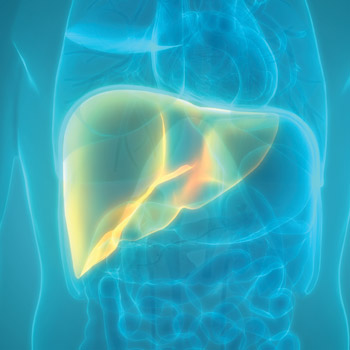What's in an eponym? Discussing namesake diseases
Where do medical eponyms come from? Consider their origins, the reasons why they've fallen out of favor, and why some still, against the odds, endure.
From Alzheimer's disease to Zenker's diverticulum, medical eponyms are prevalent in medicine, and they are often engrained in practice despite ongoing controversy about their use.
“Debate on the value of eponyms has been ongoing for decades. Some physicians have even proposed abandoning eponyms altogether in the literature, clinical practice, and medical education,” said Carl Gold, MD, MS, clinical assistant professor of neurology and neurological sciences at Stanford University in Stanford, Calif.
For example, a 2017 editorial in JAMA Neurology advocated for avoiding the use of eponyms in clinical practice. “It may be an opportune time for medicine to rename diseases in a manner that allows an understanding of mechanisms rather than remembering a physician or scientist or a set of signs or symptoms that may not be related to the disorder being discussed,” the authors wrote.
But clinicians and the literature have far from abandoned already established eponyms, said Adam Rodman, MD, MPH, FACP, creator and host of the Bedside Rounds podcast, which focuses on the history of medicine and offers CME/MOC points in partnership with ACP. “Medical language has no central organizing body … so that's part of the problem. Traditions are very hard to get rid of in medicine because it's decentralized,” he said.
On the other hand, he noted that new diseases rarely receive eponyms. “In the late '80s, early '90s, national organizations started to clarify what should be done with eponyms, and virtually every new disease that comes out now does not receive an eponym; it receives a descriptive name,” said Dr. Rodman, who is also a hospitalist at Beth Israel Deaconess Medical Center in Boston.
For example, in the early 1990s, researchers discovered a condition in which people with hypertension have a stroke-like syndrome that resolves. “The people who described it chose to name it posterior reversible encephalopathy syndrome. These are the types of names that are basically every new disease going forward,” said Dr. Rodman.
Despite the trend away from eponyms, he said most diseases named after people have remarkable staying power. “Descriptive diseases, especially when they're descriptive with scientific words, just seem to not have a connection with people,” Dr. Rodman said. “If we called Alzheimer's disease a progressive neurodegenerative disorder, I don't know that people would have the same emotional connection as they do to the word ‘Alzheimer's.’”
A study published last February in Neurology titled “Eponyms Are Here to Stay” came to a similar conclusion. Dr. Gold and coauthor Jimmy Zheng, a first-year medical student, found that about 20% of all neurologist-authored publications from 1988 to 2013 contained an eponym in the title and/or abstract. The study also surveyed current neurology residents at Stanford, finding that most were either unaware of an alternative descriptor for familiar eponyms or preferred to use the eponym.
While residents recognized the drawbacks of eponyms, most stated that historical precedent, pervasiveness, and ease of use would drive the continued use of eponyms in neurology. “Our study demonstrates quantitatively that eponyms have remained at a stable prevalence in the literature and that trainees, while aware of the drawbacks of eponyms, anticipate that eponyms will continue to be used in their clinical practice,” said Dr. Gold.
A brief history
Up until about 300 years ago, diseases had traditional names based on regular English or other languages, Dr. Rodman explained.
“‘Stroke’ is actually just literally a translation of the descriptive name from Greek, which comes down (actually very appropriately) like a crash of lightning bolt, like how a stroke would hit very quickly,” he said. “And consumption, which was the name for tuberculosis, or phthisis, which is Greek, comes from the fact that the disease seems to consume you.”
Then doctors started to replace some of the nondescriptive traditional names. “So you had something like quinsy, which was any swelling of the throat, and then doctors started to use Latinate terms, so replacing English or Old English names with Latin names,” said Dr. Rodman.
By the 19th century, physicians started to realize that there are pathological changes that underpin disease. Instead of naming diseases by patients' symptoms, they started to reclassify diseases using descriptive names, he said, offering the example of cirrhosis in 1815. “[René] Laënnec noticed that people who drink a lot of alcohol would fill up with fluid and … the liver has all of these changes, and he called it cirrhosis, which is Greek, but it just means tawny, the yellowish color that the liver would have,” said Dr. Rodman.
Then, in the latter half of the 19th century, the next generation decided to honor the men who changed medicine by naming new pathologic diseases after them, he said.
“One of the first eponyms that was used was Laënnec's cirrhosis. [Sir William] Osler added Laënnec's name as an honorific … so people are not naming them after themselves, but usually either their contemporaries or the next generation is naming it to honor [them],” Dr. Rodman said. “And it was not controversial at all—not when it was being named.” (Whether Dr. Laënnec would have approved is questionable, as he preferred simple language and insisted on calling his best-known invention “the cylinder” rather than the fancy Greek term “stethoscope,” Dr. Rodman added.)
One example of a known eponym dissenter is Austin Flint Jr., MD, one of the first internationally famous American physicians in the 19th century. “At the end of his career, the eponym movement was started, and he publicly came out against things being named after other people,” said Dr. Rodman.
As Dr. Flint put it, “So long as signs are determined from fancied analogies, and named from these or after the person who describes them, there cannot but be obscurity and confusion,” according to a 2011 article in Heart Views. Ironically, shortly after Dr. Flint died, a condition he described, the presystolic murmur that sometimes accompanies aortic regurgitation, became formally designated the Austin Flint murmur, “and we still call it that to this day,” said Dr. Rodman.
Starting in the 1870s, doctors began to recognize that many diseases are caused by microorganisms and started to name them using genus and species, but people's names were still involved, Dr. Rodman said.
“Virtually every microorganism is named after a person, honoring them. Even something like Salmonella is actually named after Daniel Salmon, who was a veterinarian who basically was the boss of the guy who discovered Salmonella,” Dr. Rodman said. “There are all these eponyms that are just baked into science. I don't think anybody looks at Salmonella and is like, ‘Oh, that's an eponym,’ but it is.”
The large social movement around eponyms gained even more popularity from the 1880s through the 1950s. This was a time period during which women were largely excluded from medicine, so there are far fewer eponyms named after women than men, noted Dr. Rodman, adding that an example would be Reed-Sternberg cells, named after Dorothy Reed, MD.
One of the more recent eponym examples is Crohn's disease, named after Burrill Bernard Crohn, MD, a prominent gastroenterologist in Manhattan, noted Robert P. Ferguson, MD, MACP, lead author of a 2014 article on medical eponyms published by the Journal of Community Hospital Internal Medicine Perspectives (JCHIMP), of which he is editor-in-chief.
“He and two others found the disease, which when I went to medical school (which is some time ago) was known as regional enteritis, and that made a lot of sense because of the pathology. But then, later on, it became known as Crohn's, and it wasn't even the other two people who did it with him,” he said. “Interestingly, the word has it that Crohn never liked having a disease named after him because he felt that most of the people who suffered from it really suffered, and he didn't want to be associated with the suffering.”
Of course, there are also diseases named after the patients who developed them rather than the physicians who discovered them. “I think the most famous example is Lou Gehrig's disease, which is ALS [amyotrophic lateral sclerosis]. Unfortunately, it's a horrible disease, and people know it well enough that they'll call it ALS. But a lot of people still call it Lou Gehrig's disease just because the connection with the person is so powerful,” Dr. Rodman said, adding that Christmas disease, or hemophilia B, is another example of a disease named after a patient.
A shift in thinking
Eponyms were not truly controversial until the 1970s, according to Dr. Rodman. As the patients' rights movement picked up, people began to question why so many diseases are named after doctors and whether it is an appropriate practice, he said. In addition, some eponyms had troubling connections with the Nazi party.
“German medicine was the dominant medicine up until World War I, so it's not surprising that most of these things are named after German people. … But there's this concern that diseases are named after people who have done terrible things,” said Dr. Rodman.
The past 20 years have seen a continued movement to reclassify old eponyms under new classification systems to bring them more in line with descriptive names, he said. As a result, “Most new diseases are no longer named after people. … For new diseases, I don't think there's much debate anymore about what we should do.”
The main arguments against eponyms are that they 1) are disrespectful of the people with the disease, 2) do not reflect the team nature of science, 3) are misleading since they're not descriptive, and 4) are named after disreputable people, Dr. Rodman said. As for the final category, the most infamous examples are Wegener's disease and Reiter's syndrome, terms that have largely fallen out of favor in the past two decades.
Friedrich Wegener first described a new type of granulomatous, destructive airway disease and published cases in the German literature in 1939, and after World War II, a Swedish pathologist recognized it as a new disease and named it after him, according to the JCHIMP review. But in 2000, researchers uncovered Friedrich Wegener's Nazi past, which involved medical experiments conducted in Poland and his possible involvement in the genocide that took place in that country during the war, the paper said.
Soon after, there was a campaign to change the disease name to antineutrophil cytoplasmic antibody-associated granulomatous vasculitis and, later, to the current name, granulomatosis with polyangiitis (GPA). “How successful this campaign has been is arguable, since in many instances the use of one of these tongue twisting terms is followed by ‘meaning Wegener's,’” the authors wrote. “It is not that easy to eliminate an eponym by a generation used to using it.”
When diagnosing GPA (which, since it's not common, only occurs about twice a year), Dr. Rodman said he usually gives the patient a descriptive diagnosis without alluding to Wegener at all. “I say, ‘This is called GPA,’ and I tell them what it stands for, and I'm like, ‘You can just search [online] for GPA,’” he said.
As for Reiter's syndrome, Hans Reiter observed nongonococcal urethritis/arthritis in a soldier during World War I, leading the syndrome to be named after him. After the war, he became an admirer of Adolf Hitler and joined the Nazi party, becoming a high-ranking physician who participated in criminal experimentation in prisoners, according to the JCHIMP review. After his wartime activities were rediscovered, a campaign was initiated to disassociate his name from reactive arthritis.
But it's important to remember that not every reclassified German eponym is named after a Nazi. As part of the effort in rheumatology to give every vasculitis a purely descriptive name, Churg-Strauss syndrome (named in part after Lotte Strauss, MD, a German-American pathologist) was also renamed to eosinophilic GPA, Dr. Rodman noted.
“She was one of the great female physicians of the early 20th century, and it pains me so much because my residents will be like, ‘Oh yeah, they took that away because they're Nazis,’” he said. “She broke barriers, people tried to keep her out of medical school, she accomplished so much, and now, 100 years later, people are like, ‘Oh, she was a Nazi,’ which is absolutely not true. So at some degree, the calling out of eponyms and getting rid of them erases some medical history.”
Aside from these examples, however, most diseases that were named after people appear to be here to stay. “It's an archaic concept for lots of reasons, but that's the way it is,” said Dr. Ferguson. “And I don't think it's going to change.”





